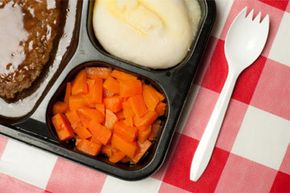In early 2013, a middle school student in a suburban Chicago cafeteria sat down to a typical lunch and, like most of her 640 peers, grabbed the only utensil available: a plastic spork – a combination of spoon and fork.
But that might change. A group at the school created a short film, "Sporktagion" in which a "sporkitis" plague spreads as everyone throws things away instead of recycling them. The result, they hope, will be lunches munched with the help of reusable metal flatware [source: Fox].
Advertisement
Perhaps they don't realize the spork doesn't have to be formed by heat-molded polymers. They can be made of any number of materials, from wood and steel to glass and titanium. There are even specialty sporks for office workers, campers, prisoners, left-handed diners and toddlers. These may have adaptive handles (in the case of southpaws and children) or short, dull tines (in the case of prisoners to prevent their use as a weapon) [source: Wilson].
The business end of a spork is similar to a spoon, but with a mountain range of truncated tines on the bowl end. This multipurpose utensil is designed to eat soup and spear solid food -- all without requiring a tableware switcheroo from spoon to fork. They're beloved by schools, fast-food chains, prisons and other institutions serving food because there's no need to buy more than one type of utensil. Plus, plastic sporks are inexpensive. It's possible to buy 1,000 for less than $10 [source: Webstaurant].
Before you write off the spork as a utensil only for the huddled masses, consider the advanced spork design, suitable for home or high-end use. These sporks are made of more expensive materials (silver-plated spork, anyone?) and feature a sharp edge so they can act as a knife, too.
Advertisement

